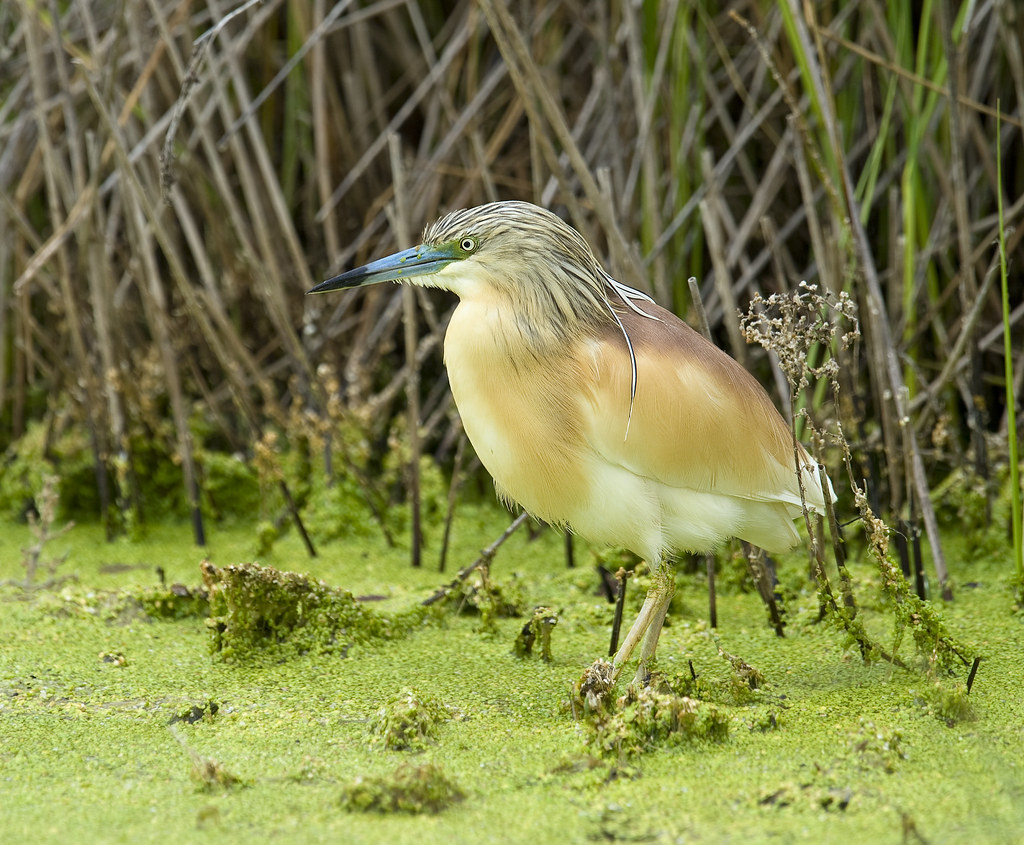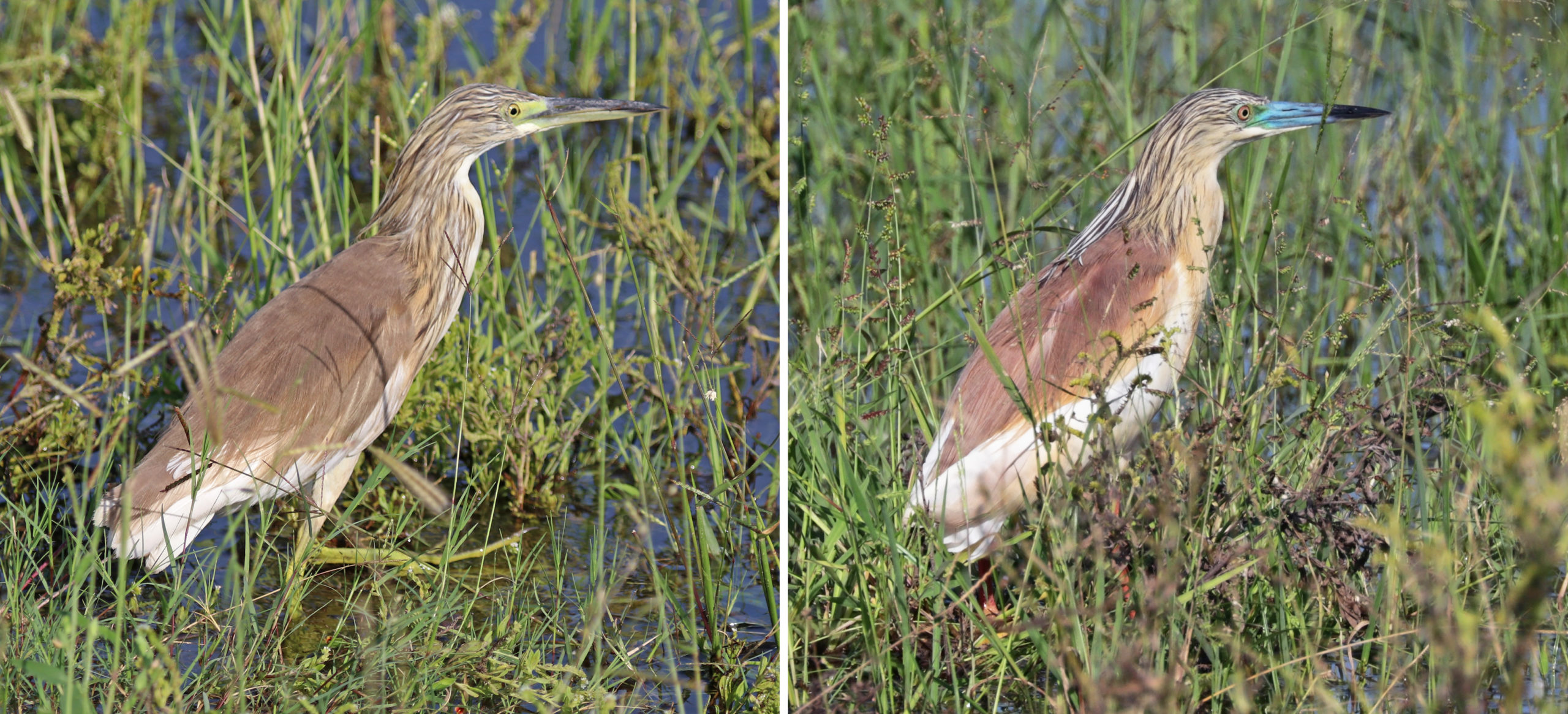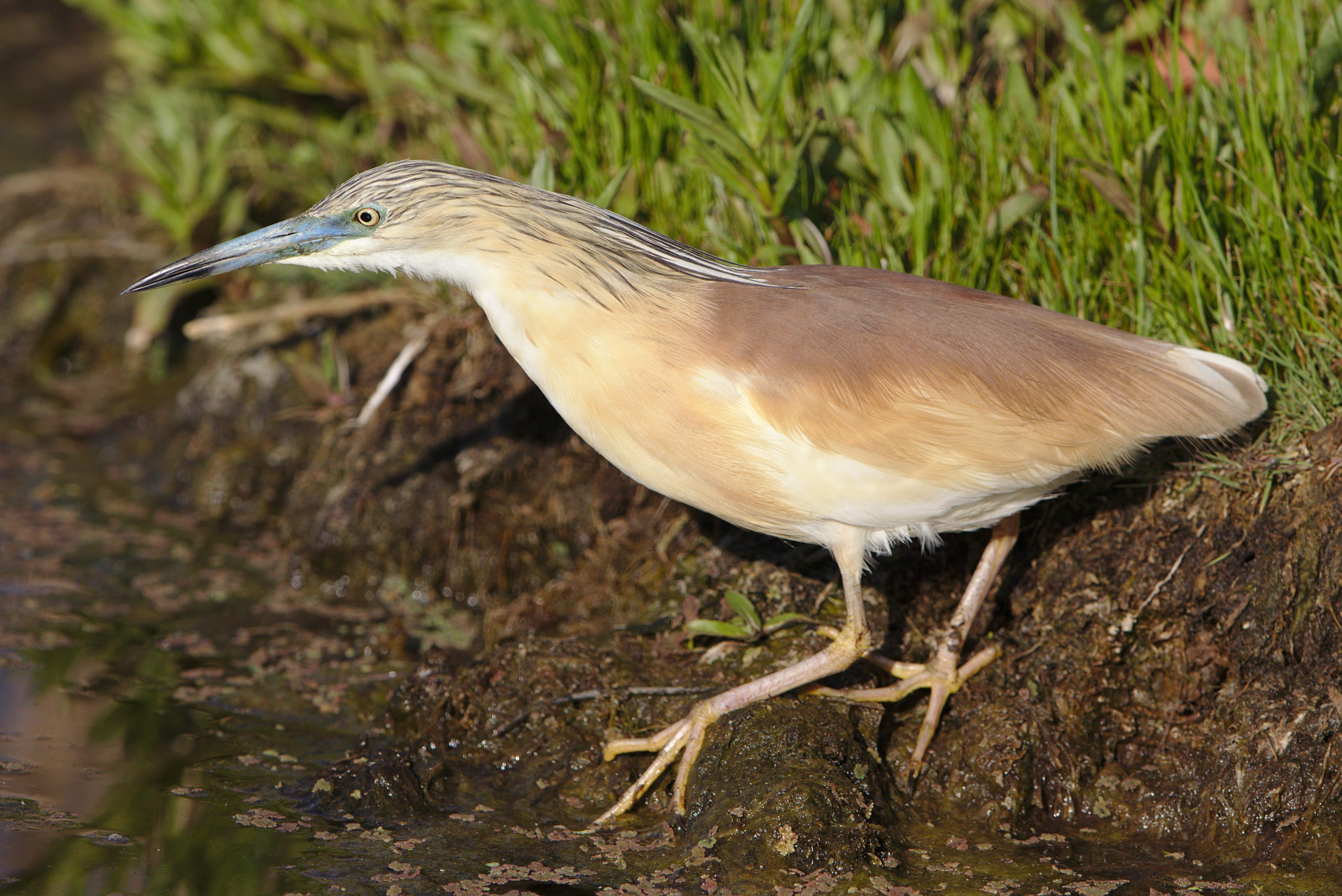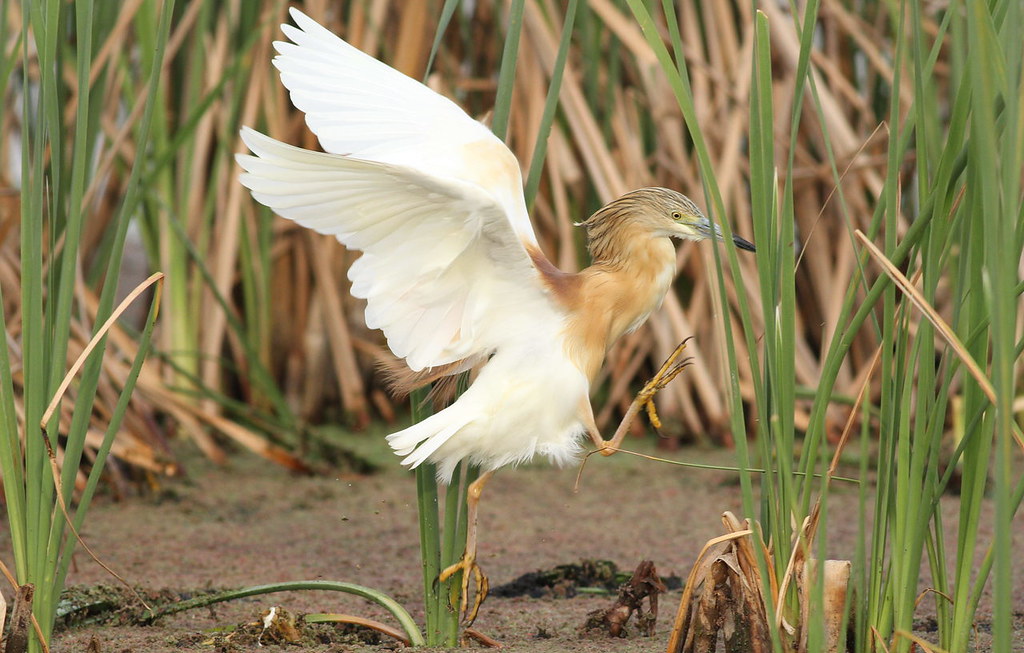Squacco heron
Ardeola ralloides
This migratory bird spends the cold season in regions of Africa and moves further north, to the European and Asian continents for mating season.
The birds arrive in the Danube Delta around April and leave in late September. Unlike its other hereon relatives, it’s a rather short and stout bird, of about 50 cm in length, with 85 cm in wingspan and weighing about 350 grams.
It struts lonely through marshes and edges of lakes, on its long legs, looking around for snails, frogs, and insects. Usually it will stand perfectly still until its prey makes a move. The feathers of these birds are cream, resembling the color of coffee with plenty of milk and their sharp beaks, while usually a greenish yellow, turn bright blue with a black tip during mating season. This gives them a very fancy and distinct look. Similarly, their long legs turn from a yellowish green to a bright pink. All dressed up and ready for the ball!

Photographer: Calvinfix

Photographer: Charles J Sharp
Această pasăre migratoare își petrece sezonul rece în regiunile Africii și se deplasează mai la nord, către continentele europene și asiatice pentru sezonul de împerechere.
Păsările ajung în Delta Dunării în jurul lunii aprilie și pleacă la sfârșitul lunii septembrie. Spre deosebire de ceilalți membri ai familiei sale de păsări, stârcul galben este o pasăre destul de scundă și robustă, având aproximativ 50 cm lungime, o anvergură a aripilor de 85 cm și o greutate de aproximativ 350 de grame.
Se strecoară singuratic prin mlaștini și marginile lacurilor, pe picioarele sale lungi, uitându-se atent după melci, broaște și insecte. De obicei, va sta perfect nemiscat până când prada sa face o mișcare. Penele acestor păsări sunt crem, asemănându-se cu culoarea cafelei cu mult lapte, iar ciocurile lor ascuțite, de obicei de un colorit galben verzui, devin albastru strălucitor cu o vârf negru în timpul sezonului de împerechere. Acest lucru le conferă o înfățișare foarte elegantă și distinctă. Similar, picioarele lor lungi trec de la un verde gălbui la un roz viu. Ținută numai bună de bal!
Stârc galben
Ardeola ralloides
Rallenreiher
Ardeola ralloides
Dieser Zugvogel verbringt die kalte Jahreszeit in Regionen Afrikas und zieht zur Paarungszeit weiter nach Norden, auf den europäischen und asiatischen Kontinent.
Die Vögel kommen etwa im April im Donaudelta an und verlassen es Ende September. Im Gegensatz zu seinen anderen hier lebenden Verwandten ist er ein eher kleiner und stämmiger Vogel mit einer Länge von etwa 50 cm, einer Flügelspannweite von 85 cm und einem Gewicht von etwa 350 Gramm.
Auf seinen langen Beinen stolziert er einsam durch die Sümpfe und an den Rändern der Seen entlang, um nach Schnecken, Fröschen und Insekten Ausschau zu halten. Normalerweise bleibt er ganz still stehen, bis sich seine Beute bewegt. Das Gefieder dieser Vögel ist cremefarben und ähnelt der Farbe von Kaffee mit viel Milch, und ihre scharfen Schnäbel, die normalerweise grünlich-gelb sind, färben sich während der Paarungszeit leuchtend blau mit einer schwarzen Spitze. Dies verleiht ihnen ein sehr ausgefallenes und unverwechselbares Aussehen. Ebenso verfärben sich ihre langen Beine von einem gelblichen Grün zu einem leuchtenden Rosa. Aufgetakelt und bereit für den Ball!

Photographer: Derek Keats

Photographer: Derek Keats
Cet oiseau migrateur passe la saison froide dans les régions d’Afrique et se déplace plus au nord, vers les continents européen et asiatique pour la saison des amours.
Les oiseaux arrivent dans le Delta du Danube vers avril et repartent au fin de septembre. Contrairement à ses autres parents ici, c’est un oiseau plutôt court et trapu, d’environ 50 cm de long, avec 85 cm d’envergure et pesant environ 350 grammes.
Il se pavane seul dans les marais et les bords des lacs, sur ses longues pattes, à la recherche d’escargots, de grenouilles et d’insectes. Habituellement, il reste parfaitement immobile jusqu’à ce que sa proie fasse un mouvement. Les plumes de ces oiseaux sont de couleur crème, ressemblant à la couleur du café avec beaucoup de lait et leurs becs pointus, tandis que généralement d’un jaune verdâtre, virent au bleu vif avec une pointe noire pendant la saison des amours. Cela leur donne un look très chic et distinct. De même, leurs longues pattes passent d’un vert jaunâtre à un rose vif. Tous habillés et prêts pour le bal!
Héron crabier
Ardeola ralloides
Try using these colors:
Remember, there are always more colors than you think you see!





